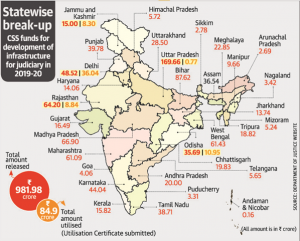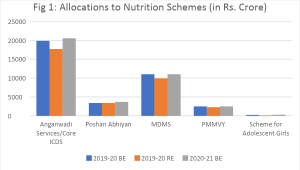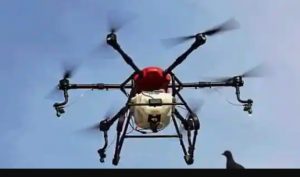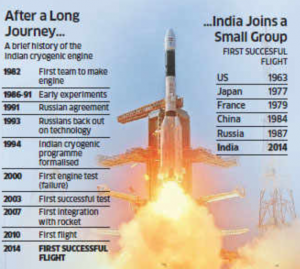INDIAN ART AND CULTURE
1. THE CULTURE MAPPING OF 80 VILLAGES
THE CONTEXT: According to the Ministry of Culture, Culture mapping of 80 villages associated with noted personalities in history, in particular the freedom movement, unique crafts and festivals had been started as a pilot project.
THE EXPLANATION:
What is Culture Mapping?
- Cultural mapping is a mode of inquiry and a methodological toolthat aims to make visible the ways local stories, practices, relationships, memories, and rituals constitute places as meaningful locations.
Database creation
- “The aim is to create a huge database related to our villages and the culture, customs and traditions there. The mapping of 80 villages would be completed in this financial year,”
- From Sempore in Kashmir to Kanjirapally in Kerala, villages with a connection to the Independence struggle as well as those with their own art practices had been selected for the pilot project being conducted by the Indira Gandhi National Centre for the Arts (IGNCA).
- Also, the project would lead to a “national register and interactive database of artists and art practices from the villages of India”. Each artist would be given a unique ID and an e-commerce platform set up.
List of Villages:
- On the list of villages selected, was Sempore or Pandrenthan in Budgam district of Jammu and Kashmir that is associated with 14th Century mystic Lal Ded or Lalleshwari. From Ladakh, the pilot project included Choglamsar and Wanla villages, known for wood carving. Khatkar Kalan village in Punjab, which has a memorial of Bhagat Singh; Reni village of Uttarakhand, where the Chipko movement started; and Kathputli Colony in Delhi, known for the “migrant kathputli artists”, were also on the list.
Two villages of Tamil Nadu
- Sites of religious importance, including Shringverpur in Uttar Pradesh which, was “associated with Lord Rama – Lord Rama stayed here for one night after Nishadraj Guha”, were also included in the list of villages.
- Two villages of Tamil Nadu – Ettayapuram (the birthplace of poet Subramania Bharathi) and Thiruchigadi (a village of “women potters) – are also on the list.
- Kanjirapally village, associated with Accama Cherian, an Independence activist known as the Jhansi Rani of Travancore, was on the list.
While the Culture Ministry had launched the culture mapping mission in 2017, the project had been slow to take off, before it was handed over to the IGNCA.
INDIRA GANDHI NATIONAL CENTER FOR THE ARTS (IGNCA)
“IGNCA, which is an autonomous organisation under the administrative control of Ministry of Culture has been designated as implementation agency for the National Mission on Cultural Mapping.
The work under the mission involves coordinating the data collection through ground and field surveys conducted on the basis of detailed formats and questionnaires, mobile application, interactive web-portal and an Over-The-Top (OTT) platform to showcase ethnographic documentaries/ cultural events/ festival/ melas etc. of villages,”
|
NATIONAL MISSION ON CULTURAL MAPPING ON INDIA The Mission encompasses data mapping, demography building, formalising the processes and bringing all cultural activities under one umbrella for better results. For this, cultural critical mass of knowledge centers (individual/institution/ non-government organisations) in every field of culture & all art forms needs to work in tandem with networking and with dedication. Although disjointed efforts have been going on in this area by various institutions / organisations and isolated success stories are also available, however a holistic approach is the need of the hour. Need of the hour is to establish a cultural roadmap aligned and in consonance with cultural mapping of India by creating a one stop working place for all types of art community.
|
INDIAN POLITY, GOVERNANCE & SOCIAL JUSTICE
2. THE DEFAULT BAIL
THE CONTEXT: The National Investigation Agency (NIA) has approached the Supreme Court against a Bombay High Court order granting bail to advocate and activist Sudha Bharadwaj. While she was given ‘default bail’, eight others were denied the benefit in the same case.
THE EXPLANATION:
What happened in Sudha Bharadwaj’s case?
- In the Bhima Koregaon case, which is under UAPA, the prosecution got the 90-day limit extended to 180 days. Ms. Bharadwaj completed 90 days in prison in January 2019, but the charge sheet was filed only in February 2021.
- Meanwhile, she had applied for default bail on the ground that the extension given by a Sessions Court earlier was without jurisdiction. The court agreed that only a Special Court could have authorised the extension beyond 90 days. Therefore, she was entitled to statutory bail. However, eight others, who had argued that the court order taking cognisance of the charge sheet was defective, but did not specifically seek default bail, were not given the same relief.
BACKGROUND:
What is bail & types of bails in India?
The term ‘bail’ is originated from an old French verb ‘bailer’ which means ‘to give’ or ‘to deliver’. Bail refers to the provisional release of the accused in a criminal case in which the court is yet to announce the judgment. The term ‘bail’ means the security that is deposited in order to secure the release of the accused.
Depending upon the sage of the criminal matter, there are commonly three types of bail in India:
- Regular bail- A regular bail is generally granted to a person who has been arrested or is in police custody. A bail application can be filed for the regular bail under section 437 and 439 of CrPC.
- Interim bail– This type of bail is granted for a short period of time and it is granted before the hearing for the grant of regular bail or anticipatory bail.
- Anticipatory bail– Anticipatory bail is granted under section 438 of CrPC either by session court or High Court. An application for the grant of anticipatory bail can be filed by the person who discerns that he may be arrested by the police for a non- bailable offence.
What is default bail?
- Also known as statutory bail, this is a right to bail that accrues when the police fail to complete investigation within a specified period in respect of a person in judicial custody. This is enshrined in Section 167(2) of the Code of Criminal Procedure where it is not possible for the police to complete an investigation in 24 hours, the police produce the suspect in court and seek orders for either police or judicial custody. This section concerns the total period up to which a person may be remanded in custody prior to filing of charge sheet.
- For most offences, the police have 60 days to complete the investigation and file a final report before the court. However, where the offence attracts death sentence or life imprisonment, or a jail term of not less than 10 years, the period available is 90 days. In other words, a magistrate cannot authorise a person’s judicial remand beyond the 60-or 90-day limit.
- At the end of this period, if the investigation is not complete, the court shall release the person “if he is prepared to and does furnish bail”.
How does the provision vary for special laws?
The 60- or 90-day limit is only for ordinary penal law. Special enactments allow greater latitude to the police for completing the probe. In the Narcotic Drugs and Psychotropic Substances Act, the period is 180 days. However, in cases involving substances in commercial quantity, the period may be extended up to one year. This extension beyond 180 days can be granted only on a report by the Public Prosecutor indicating the progress made in the investigation and giving reasons to keep the accused in continued detention.
In the Unlawful Activities (Prevention) Act, the default limit is 90 days only. The court may grant an extension of another 90 days, if it is satisfied with a report by the Public Prosecutor showing the progress made in the investigation and giving reasons to keep the accused in further custody. These provisions show that the extension of time is not automatic but requires a judicial order.
What are the laid-down principles on this aspect?
- Default or statutory bail is a right, regardless of the nature of the crime. The stipulated period within which the charge sheet has to be filed begins from the day the accused is remanded for the first time.
- It includes days undergone in both police and judicial custody, but not days spent in house-arrest. A requirement for the grant of statutory bail is that the right should be claimed by the person in custody. If the charge sheet is not filed within the stipulated period, but there is no application for bail under Section 167(2), there is no automatic bail.
- In general, the right to bail on the investigation agency’s default is considered an ‘indefeasible right’, but it should be availed of at the appropriate time.
3. NATIONAL JUDICIAL INFRASTRUCTURE AUTHORITY OF INDIA (NJIAI)
THE CONTEXT: Chief Justice of India suggests one central agency, with a degree of autonomy, for overseeing infrastructure development of subordinate courts in India.
THE EXPLANATION:
- According to Department of Justice, total of ₹981.98 crore sanctioned in 2019-20 under the Centrally Sponsored Scheme (CSS) to the States and Union Territories for development of infrastructure in the courts, only ₹84.9 crore was utilised by a combined five States, rendering the remaining 91.36% funds unused.
- This underutilisation of funds is not an anomaly induced by the COVID-19 pandemic. The issue has been plaguing the Indian judiciary for nearly three decades when the CSS was introduced in 1993-94.
- This is one of the reasons why the Chief Justice of India, recently proposed creation of a National Judicial Infrastructure Authority of India (NJIAI), which will take control of the budgeting and infrastructure development of subordinate courts in the country.

Need for Judicial Infrastructure?
- The Indian judiciary’s infrastructure has not kept pace with the sheer number of litigations instituted every year. A point cemented by the fact that the total sanctioned strength of judicial officers in the country is 24,280, but the number of court halls available is just 20,143, including 620 rented halls.
- Also, there are only 17,800 residential units, including 3,988 rented ones, for the judicial officers.
- As much as 26% of the court complexes do not have separate ladies toilets and 16% do not have gents toilets. Only 32% of the courtrooms have separate record rooms and only 51% of the court complexes have a library.
- Only 5% of the court complexes have basic medical facilities and, only 51% of the court complexes have a library. While the pandemic has forced most of the courts to adopt a hybrid system — physical and videoconferencing mode — of hearing, only 27% of the courtrooms have a computer placed on the judge’s dais with videoconferencing facility.
Greater Autonomy:
- He stressed on the need for “financial autonomy of the judiciary” and creation of the NJIAI that will work as a central agency with a degree of autonomy.
- According to CJI, Explaining the requirement for a greater autonomy for the NJIAI, a source familiar with the development in the Supreme Court, said, “The lack of one particular coordinating agency means each year the funds get lapsed. It remains underutilised.”
- This claim is supported by the fact that in 2020-21, of the ₹594.36 crore released under the CSS, only ₹41.28 crore was utilised by a single State — Rajasthan.
- The data released by the Department of Justice further revealed that in 2018-19, of the ₹650 crore released by the Centre under the CSS, the utilisation certificate was submitted by 11 States for a total of ₹225 crore.
- The current fund-sharing pattern of the CSS stands at 60:40 (Centre:State) and 90:10 for the eight north-eastern and three Himalayan States. The Union Territories get 100% funding.
- Also, he said, “If the scheme (NJIAI) is placed under the Government, it will be much like the current scheme of thing. Nobody will bother. There has to be a special purpose vehicle driven by a sense of belongingness and passion, with a degree of authority. That authority has to come from the Supreme Court,”
NALSA model
- The proposed NJIAI could work as a central agency with each State having its own State Judicial Infrastructure Authority, much like the National Legal Services Authority (NALSA) model.
- It has also been suggested that the Chief Justice of India could be the patron-in-chief of the NJIAI, like in NALSA, and one of the Supreme Court judges nominated by the Chief Justice could be the executive chairman.
- But, unlike NALSA which is serviced by the Ministry of Law and Justice, the proposed NJIAI should be placed under the Supreme Court of India.
- “In the NJIAI there could be a few High Court judges as members, and some Central Government officials because the Centre must also know where the funds are being utilised.
- Similarly, in the State Judicial Infrastructure Authority, he said, in addition to the Chief Justice of the respective High Court and a nominated judge, four to five district court judges and State Government officials could be members.
“Institutionalising the mechanism for augmenting and creating state-of-the-art judicial infrastructure is the best gift that we can think of giving to our people and our country in this 75th year of our Independence”.
4. THE WORLD’S LARGEST SOCIAL PROGRAMME ON CHILDHOOD SERVICES: ICDS
THE CONTEXT: According to National Family Health Service (NFHS)-5 data, in 2019-20, less than 15% of five-year-olds attended any pre-primary school at all. A recent study estimates that the time women spend on unpaid work may have increased by 30% during the pandemic.
THE EXPLANATION:
- Being closed since the April 2020-lockdown, anganwadis are slowly reopening. Those in Karnataka, Bihar and Tamil Nadu are opening or considering opening shortly.
- As part of the Integrated Child Development Services (ICDS), anganwadis play a crucial role in supporting households, particularly from low-income families, by providing childcare, health and nutrition, education, supplementary nutrition, immunisation, health check-up and referral services.
- The largest in the world, ICDS covers about 88 million children aged 0-6 years in India. Their closure significantly impacted service delivery and weakened an important social safety net.
The Empirical data:
- Surveys by IDinsight across five States in November 2018 and November 2019 found that anganwadi workers were a primary source of nutrition information for families. Even as anganwadis resumed services, the closure has impacted their ability to serve as childcare centres.
- A recent study estimates that the time women spend on unpaid work may have increased by 30% during the pandemic. In COVID-19 rural household surveys across eight States, 58% of women cited home-schooling as the biggest contributor to increase in unpaid work. Sending younger children to anganwadis will free up women’s time, including for economic activities. Early childhood, the period from birth to five years of age, is a crucial developmental window.
- As platforms for early childhood education and nutrition support, anganwadis can play an important role for children to achieve their potential. The National Education Policy, 2020, places anganwadis at the centre of the push to universalise access to early childhood care and education (ECCE).
- NITI Aayog found that only 59% of anganwadis had adequate seating for children and workers, and more than half were unhygienic. These issues worsen in an urban context, with the utilisation of early childcare services at anganwadis at only 28%, compared to 42% for rural areas, according to NFHS-4 data.
Value Addition:
Integrated Child Development Service (ICDS)
It is a scheme providing for supplementary nutrition, immunization and pre-school education to the children is a popular flagship programme of the government.
Launched in 1975, it is one of the world’s largest programmes providing for an integrated package of services for the holistic development of the child.
- ICDS is a centrally sponsored scheme implemented by state governments and union territories.
- The scheme is universal covering all the districts of the country.
- The Scheme has been renamed as Anganwadi Services.

Objectives
- To improve the nutritional and health status of children in the age-group 0-6 years;
- To lay the foundation for proper psychological, physical and social development of the child;
- To reduce the incidence of mortality, morbidity, malnutrition and school dropout;
- To achieve effective co-ordination of policy and implementation amongst the various departments to promote child development; and
- To enhance the capability of the mother to look after the normal health and nutritional needs of the child through proper nutrition and health education.
Beneficiaries
- Children in the age group of 0-6 years
- Pregnant women and
- Lactating mothers
Services under ICDS
The ICDS Scheme offers a package of six services, viz.
- Supplementary Nutrition
- Pre-school non-formal education
- Nutrition & health education
- Immunization
- Health check-up and
- Referral services
Three of the six services viz. immunization, health check-up and referral services are related to health and are provided through National Health Mission and Public Health Infrastructure. The services are offered at Anganwadi Centres through Anganwadi Workers (AWWs) and Anganwadi Helpers (AWHS) at grassroots level.
As the world’s largest provider of early childhood services, anganwadis perform a crucial role in contributing to life outcomes of children across India. To improve these outcomes, we need to invest more significantly in anganwadis, and roll out proven innovative interventions.
THE SCIENCE AND TECHNOLOGY
5. INDIA’S FIRST PRIVATELY BUILT FULLY CRYOGENIC ENGINE
THE CONTEXT: Hyderabad based startup- Skyroot Aerospace successfully tested Dhawan-1, it became the country’s first privately developed fully cryogenic rocket engine.
THE EXPLANATION:
- It running on two high-performance rocket propellants — liquid natural gas (LNG) and liquid oxygen (LoX). The indigenous engine was
 developed using 3D printing with a superalloy.
developed using 3D printing with a superalloy. - Now, after successfully demonstrating the technology, the startup will work on scaling it up to build a bigger engine that will be flying to space in its Vikram-2 launch vehicle in 2023.
- Traditionally liquisd hydrogen has been used, but now space agencies as well as space companies are working on LNG because it is not only a greener fuel but also more cost effective as compared to liquid hydrogen.
What is Cryogenic Engine?
- Cryogenic means low temperature. Cryogenic engines are highly efficient liquid propellant engines. They use liquid oxygen and liquid hydrogen as the propellant. Oxygen can be kept in liquid state at below -1830 C temperature, while hydrogen requires temperature below -253°C to be in liquid form.
- Moreover, the liquid oxygen is very reactive. So, effective technology is required to ensure that both come in contact only in the combustion chamber. Apart from this technological care, two quite different state of temperature are required to be maintained.
- To keep propellant in liquid state, low temperature is to be maintained while in the combustion chamber very high temperature and pressure are created by combustion to create a greater thrust. These engines produce greater thrust by the same weight of propellant than other engines. They are highly efficient and are used throughout the world.
Cryogenic engines are very useful in launching of heavy satellite launch vehicles like GSLV. We will be able to launch much heavier satellites into orbit. Even satellite launching market will be available for India in the world. Cryogenic engines will not only make India progress in its own programmes, but commercialisation of this technology and its services will get India foreign currency.
THE INTERNAL SECURITY AFFAIRS
6. THE ANTI-DRONE SYSTEM
THE CONTEXT: According to the Home Minister, India is developing indigenous technology to thwart the growing threat of drones on the country’s borders, and it will soon be made available to the security forces.
THE EXPLANATION:
- The Defence Research and Development Organisation (DRDO) has developed an anti-drone system to neutralize enemy drone attacks. The indigenous drone technology is capable of counter-attacks including detection, Soft Kill (for jamming the communication links of drone) and Hard Kill (laser-based hard kill to destroy the drone) of enemy Drones. The system is already demonstrated to Armed Services and other internal security agencies.
- The indigenous DRDO Counter-Drone Technology is transferred to Bharat Electronics Limited (BEL). Simultaneously, Transfer of Technology (ToT) of the Counter-Drone System is offered to other companies.

What is an Anti-drone system?
Anti-drone systems detect and or intercept unwanted drones and unmanned aerial vehicles (UAVs). They are deployed to protect areas such as airports, critical infrastructure, large public spaces such as stadiums, and military installations and battlefields.
Need for anti-drone system
Increased use of unmanned drones to target, drop and supply weapons, explosives and ammunition across the western borders by the terror groups to their network in India, particularly in Jammu and Kashmir and Punjab has raised security concerns. Therefore, in a bid to counter these attacks, the DRDO has developed the anti-Drone system.
How does the anti-drone system developed by DRDO work?
- The anti-drone system houses a radar that helps in the 360-degree coverage to detect micro drones up to 4 km and the Electro-optical (EO) and infrared (IR) sensors that can detect micro drones up to 2 km in a specified direction. These sensors when paired with machine vision and artificial intelligence (AI) algorithms lessen the risk of false positives and false negatives.
- EO/IR gimbals for anti-drone systems combine multiple cameras into one payload that can be mounted on a fixed site or moving vehicle.
- Acoustic CUAS detection systems compare the noise made by drone propulsion systems to a database of sounds. However, their accuracy can be affected by other noises in the vicinity.
- On 29 June 2021, Prime Minister chaired a meeting attended by Cabinet Ministers to expedite the process of devising a drone policy for India. It is to be noted that India doesn’t have a universal policy to deal with rogue drones.
- Means its nucleus is so large that it is unstable.
THE PRELIMS PRACTICE QUESTIONS
Q1: Consider the following statements about ICDS scheme:
- It is a centrally sponsored scheme.
- It is implemented by Ministry of Health and Family Welfare.
- Supplementary Nutrition Programme is part of ICDS scheme.
Which of the statements given above is/are correct?
a) 1 only b) 2 and 3 only
c) 1 and 3 only d) All of them
ANSWER FOR DECEMBER 04th 2021 PRELIMS PRACTICE QUESTIONS
ANSWER: B
EXPLANATION:
- Economic Recession refers to a significant decline in general economic activity in a designated region. Increase in expenditure on public projects will have a multiplier effect on the pace of economic growth of the country. Public expenditure has the expansionary effect on the growth of national income, employment opportunities, etc.
- Private investors are incapable of making massive investments on the various infrastructural projects like road-bridge-dam construction, power plants, transport and communications, etc. It is imperative that the government undertakes such projects. Greater the public expenditure, higher is the level of economic development.

 developed using 3D printing with a superalloy.
developed using 3D printing with a superalloy.